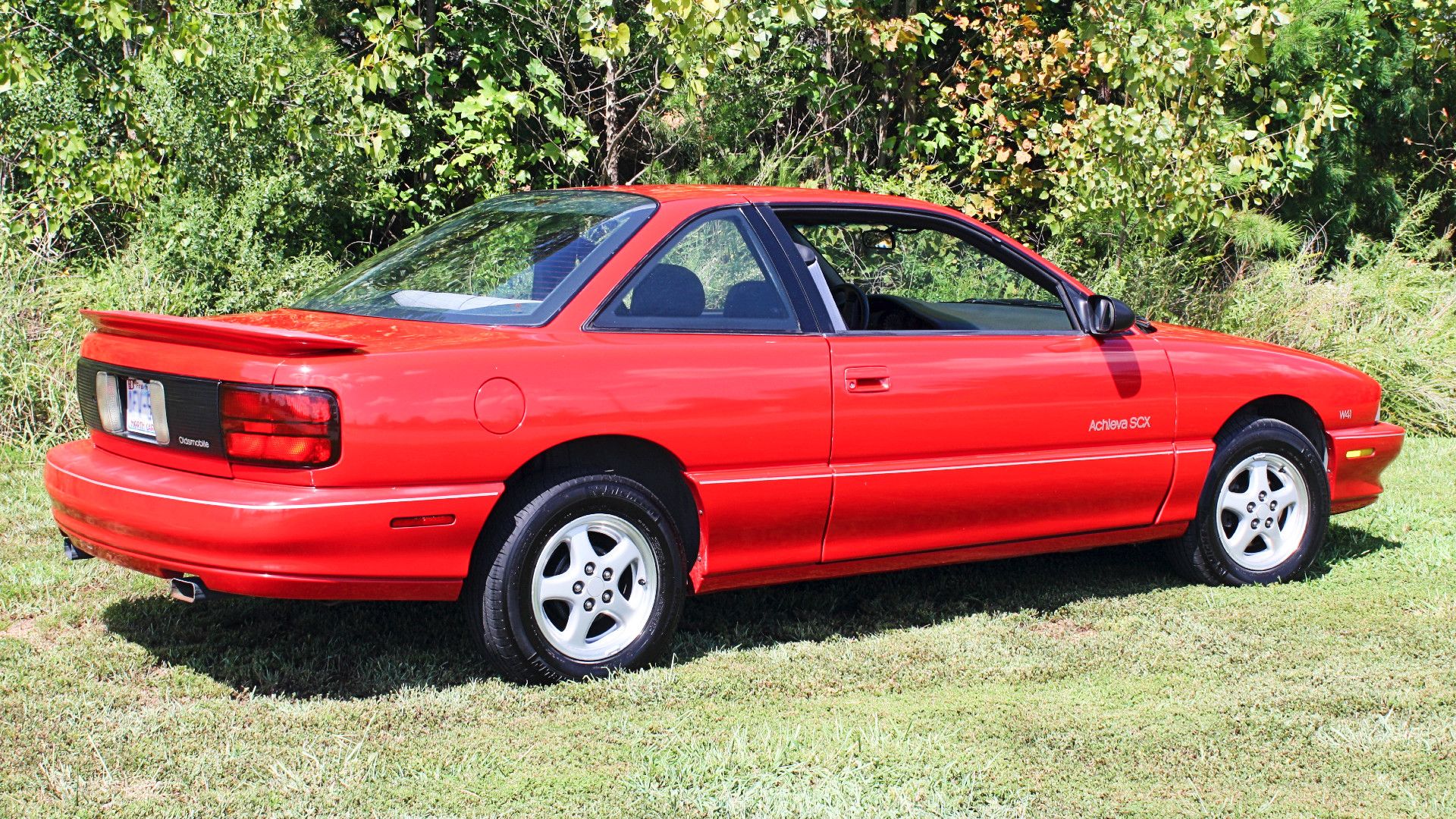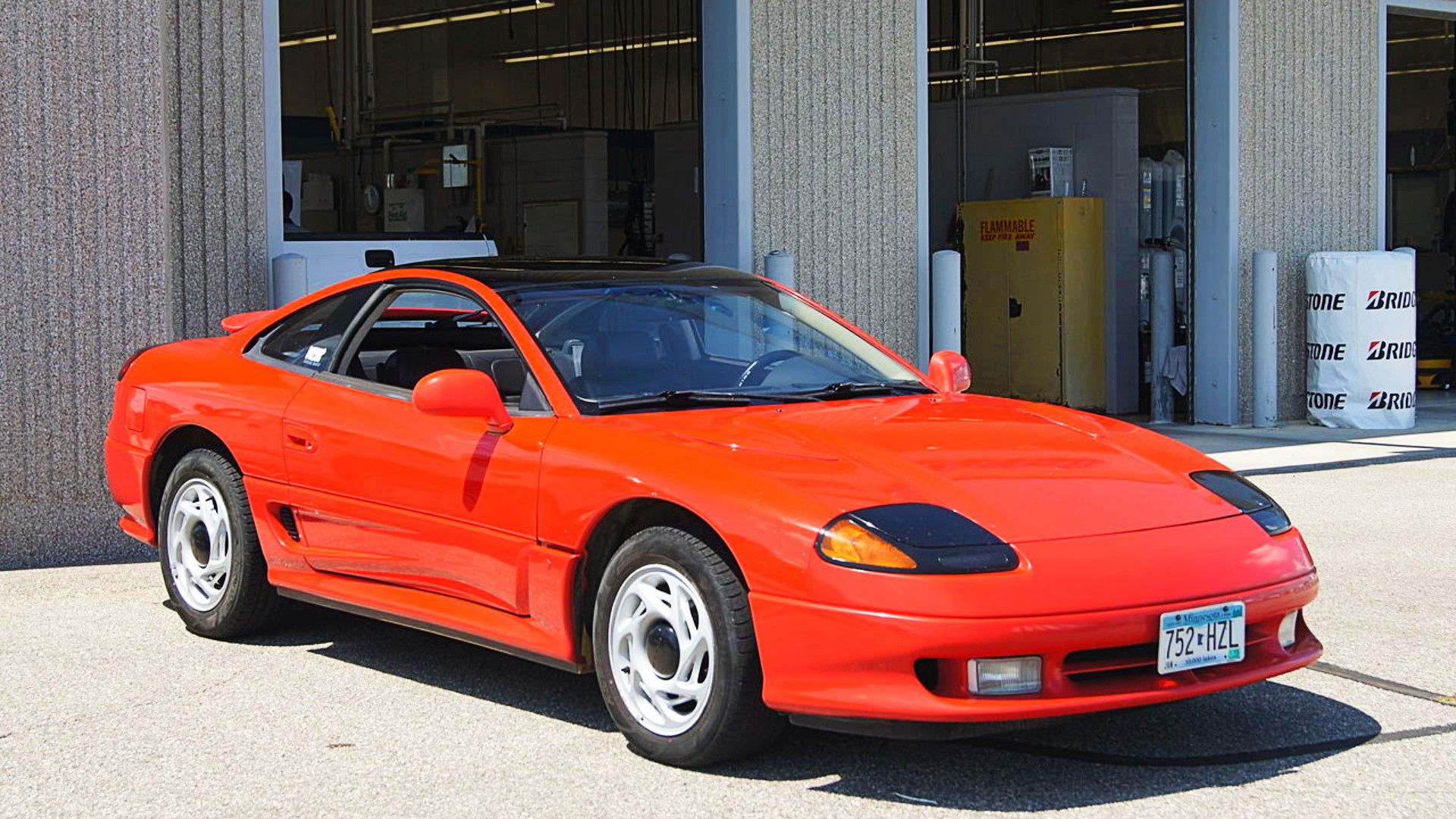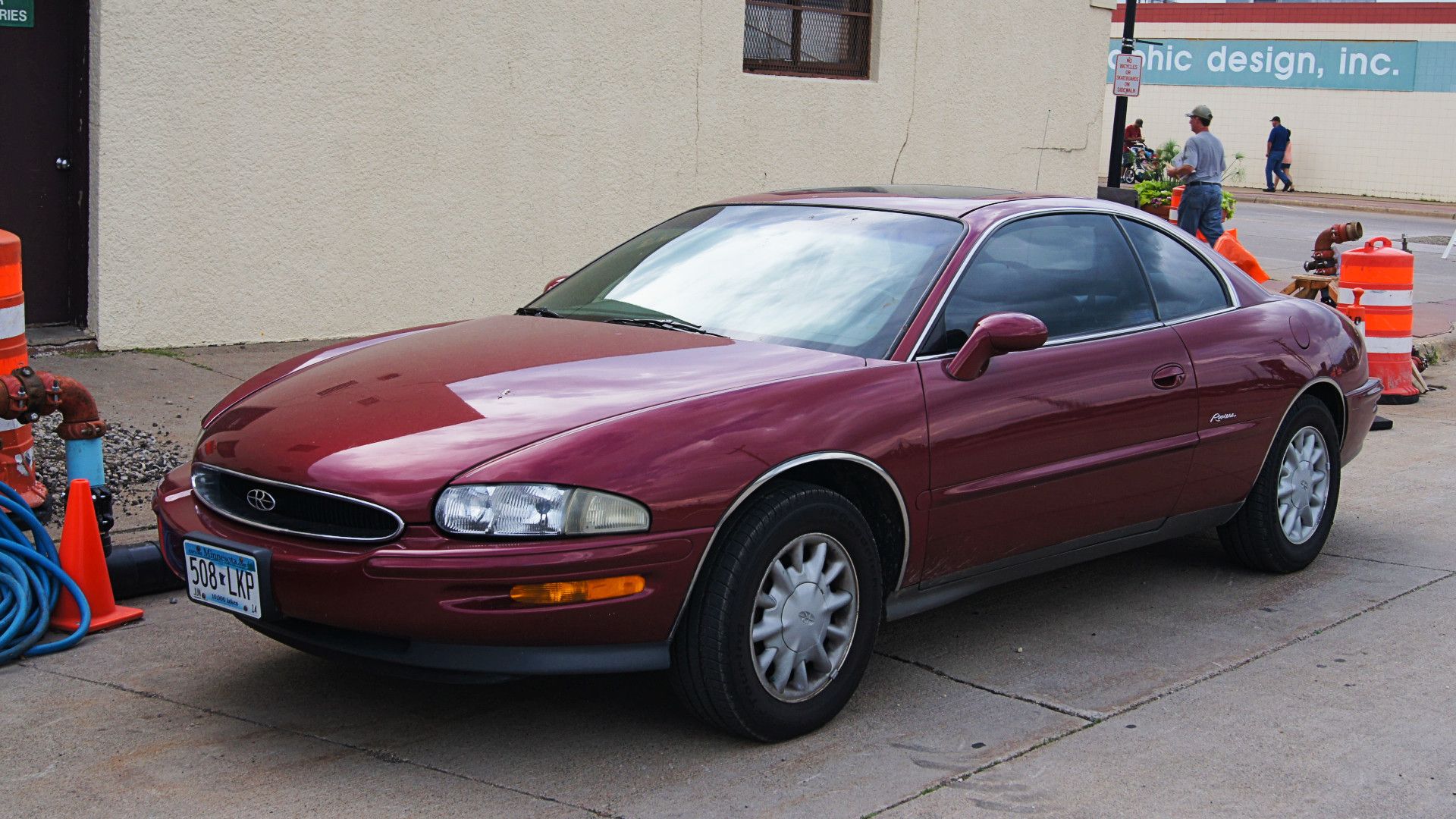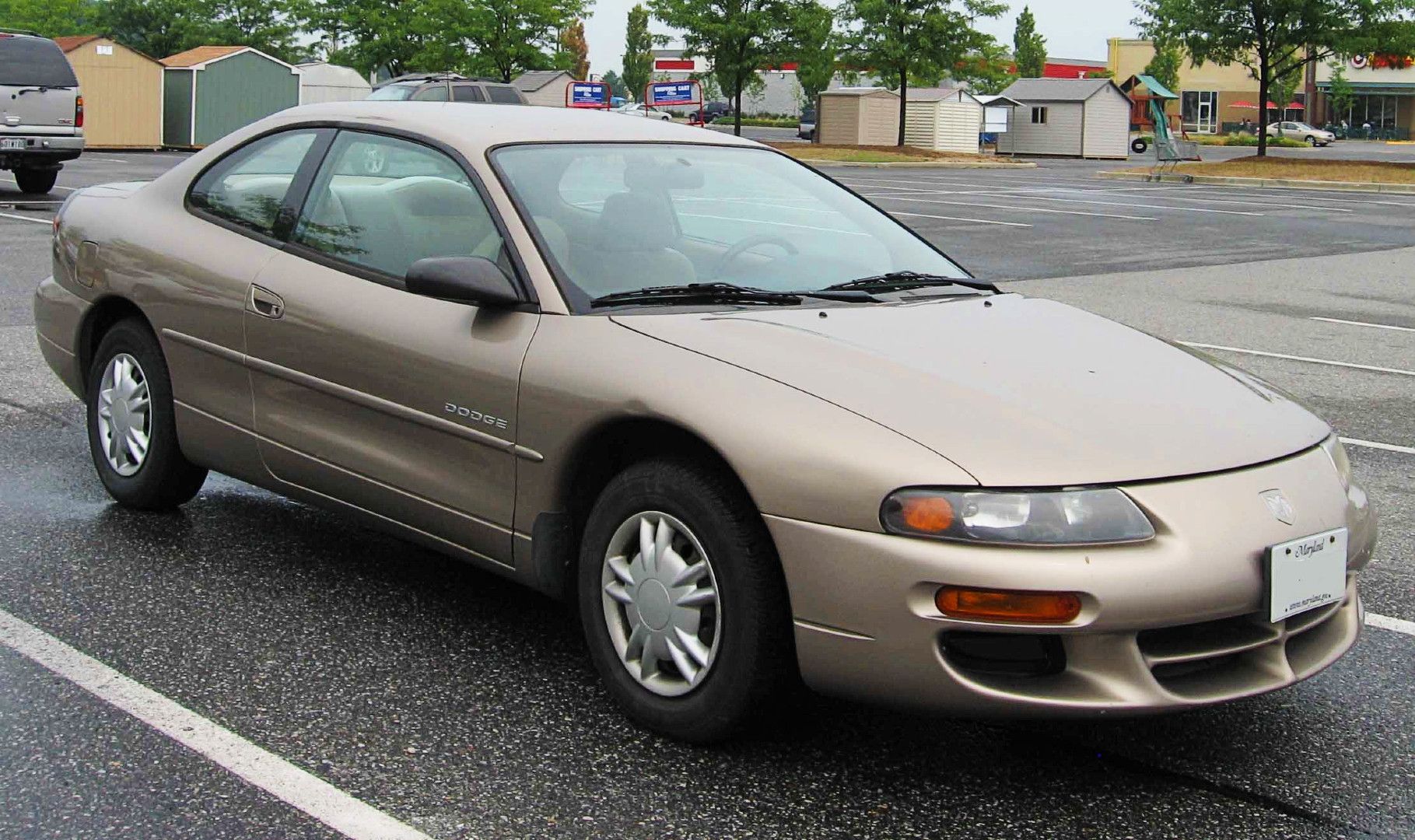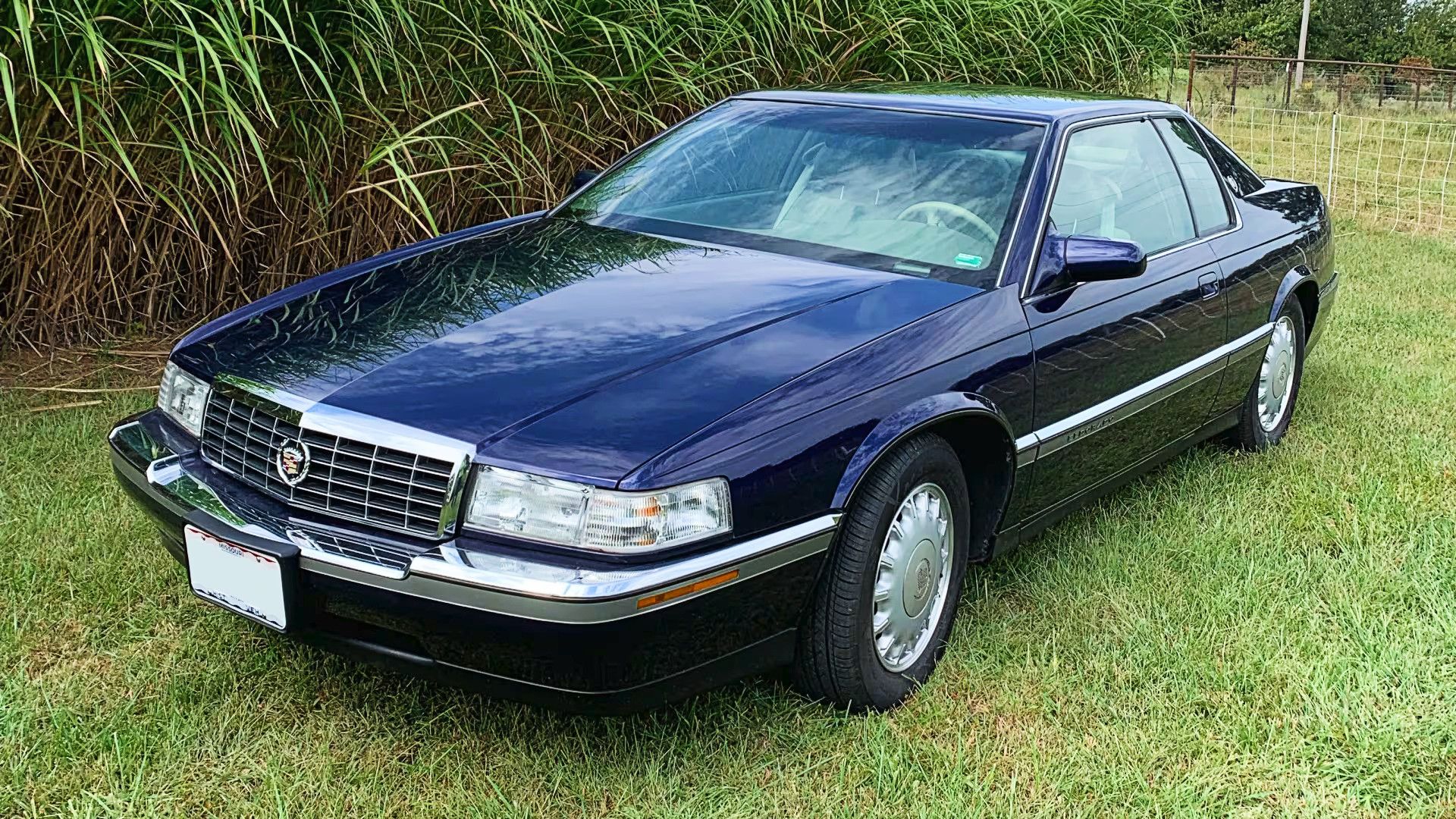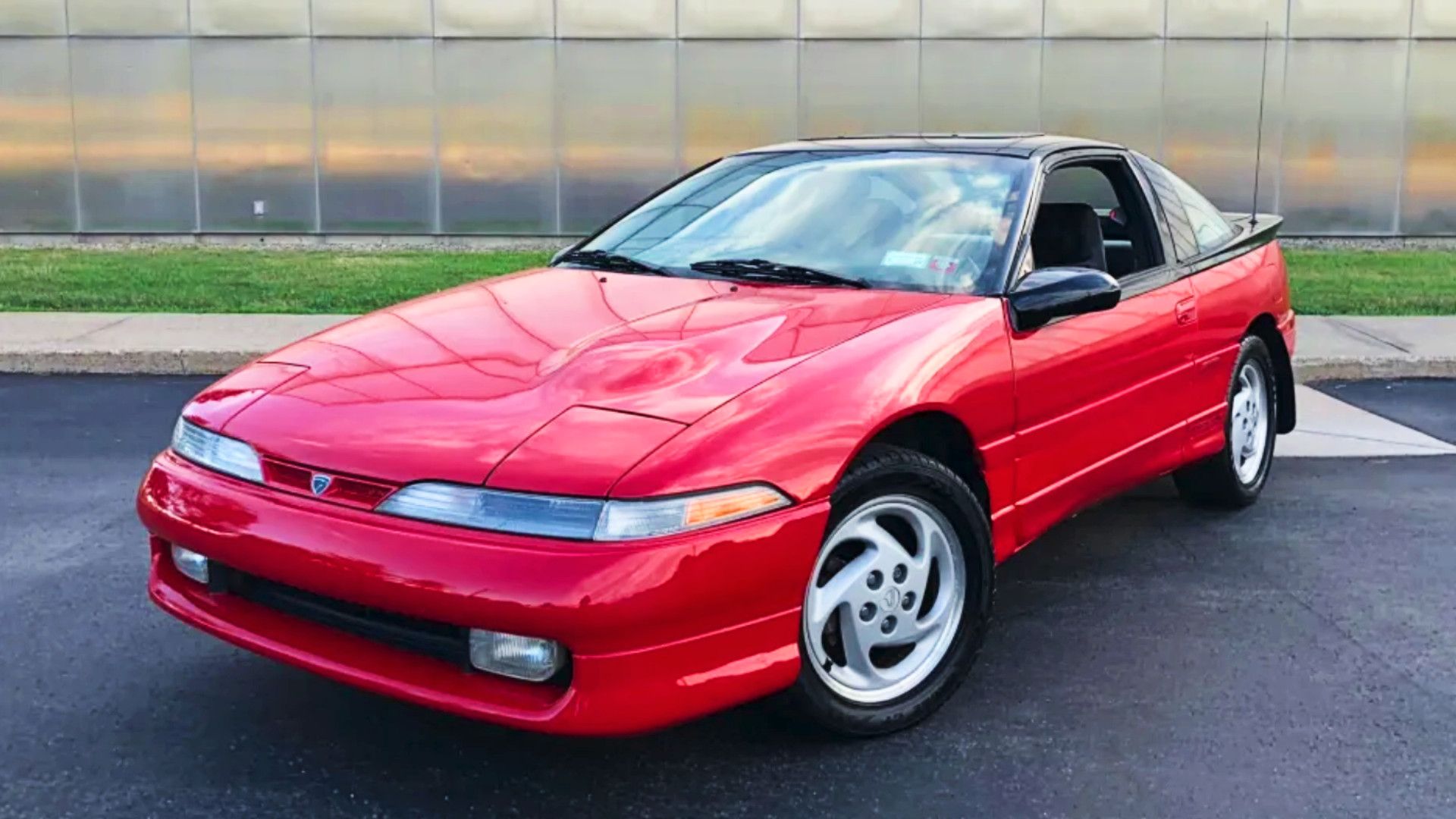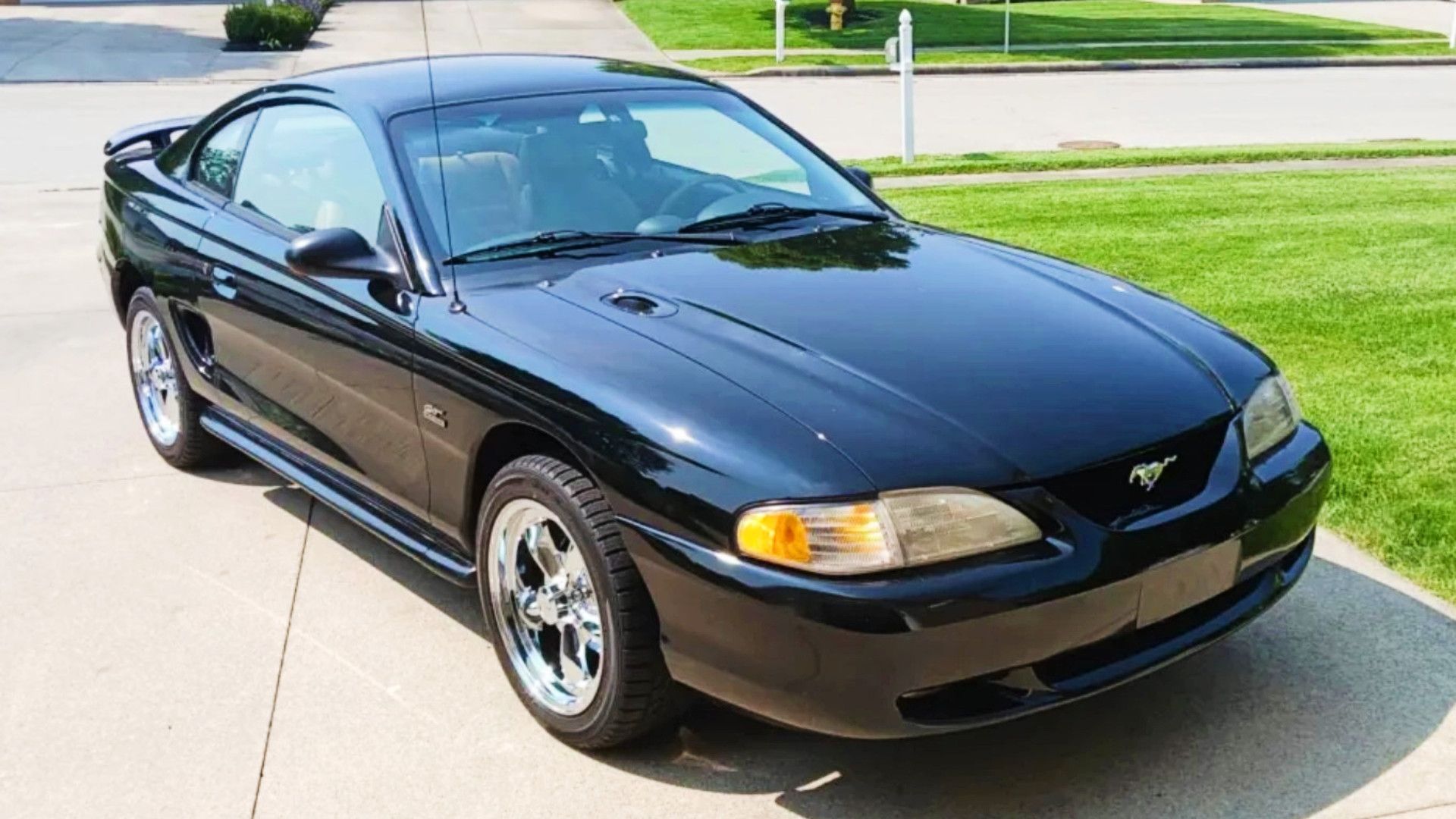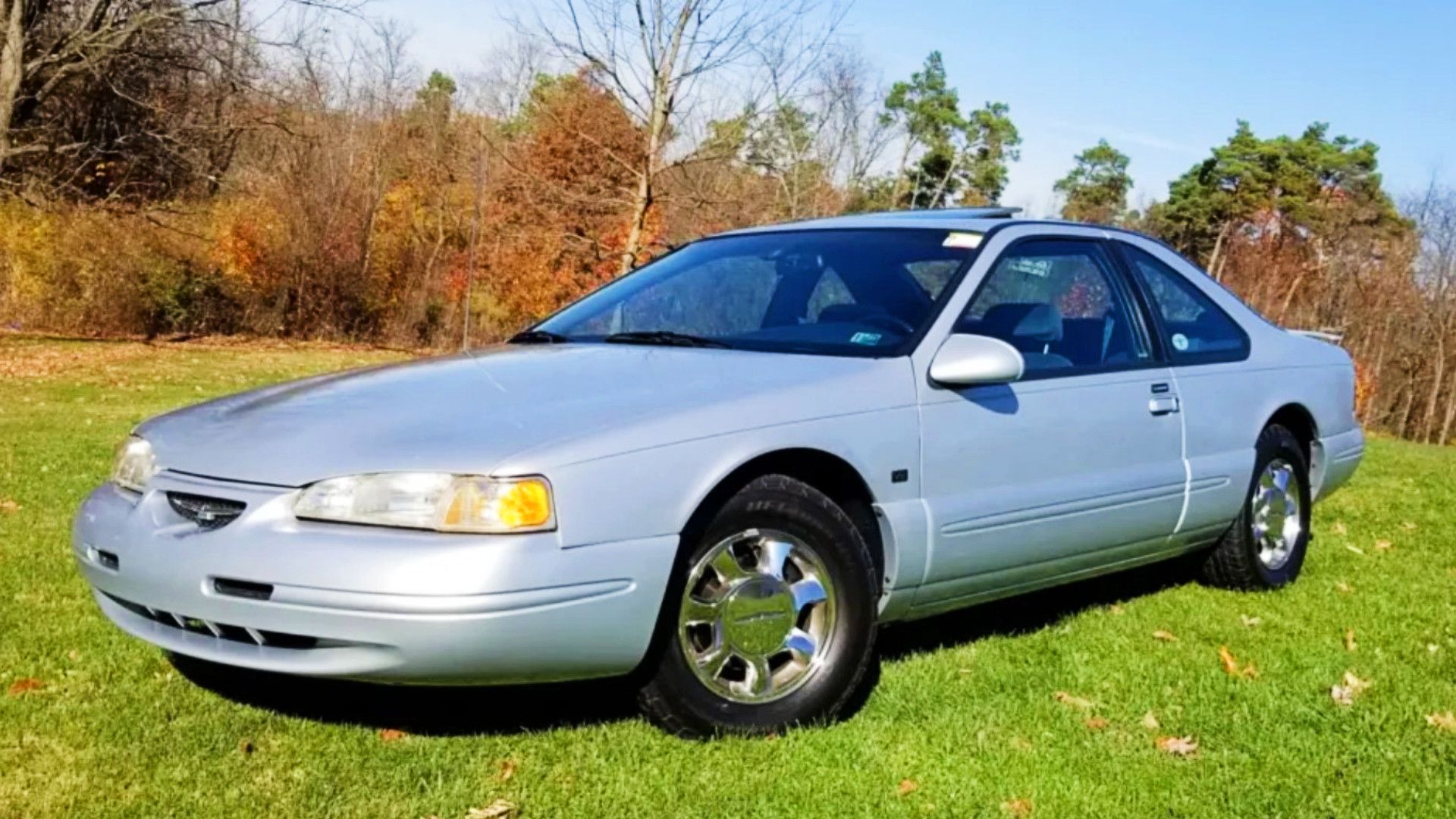The 1990s was the decade when cars were evolving from boxy machines to curvy, more aerodynamic, spirited rides. Technologies being introduced back then made the vehicles faster yet more efficient. When talking about the best American performance coupes of that period, you have some of the most iconic specimens in the form of the Chevrolet Corvette, Ford Mustang, or Dodge Viper.
These American automotive heroes are known for their big and powerful engines. They also boasted performance upgrades such as better suspension or brakes that made them way better than their contemporaries. Today, some of these nameplates from the ’90s have turned into modern classics. In recent years, such vehicles from the 1990s have increased in value and collectibility.
While homegrown coupes have etched their place in automotive history, some American performance models have seemingly been brushed aside or forgotten. This can be attributed to the shifting preferences of the market, tough competition, short production run, or the state of the economy that greatly affected the buying power of consumers. With that, here are some forgotten American performance coupes from the 1990s that are worth remembering.
To give you the most up-to-date and accurate information possible, the data used to compile this article was sourced from various manufacturer websites and other authoritative sources, including Car And Driver, MotorTrend, and Edmunds. The vehicles are ranked per their popularity and weighed based on sales during their production runs.
10 1992-1993 Oldsmobile Achieva SCX
Pocket Rocket In Disguise (U.S. Sales: 1,646)
It was an out with the old in with the new kind of move when General Motors decided to drop one of its N-Body platform mainstays to pave the way for the Oldsmobile Achieva. The segment was then headlined for the brand by the likes of Buick Skylark, Pontiac Grand Am, and Oldsmobile Calais. The carmaker swung the axe and killed the aging Calais for the next-generation vehicles using the platform. The Achieva sports a more appealing modern and aerodynamic body design. The SCX trim was one of the more upmarket variants in the guise of a coupe.
Performance Specifications
|
Engine |
2.3-Liter Inline Four |
|
Transmission |
Five-Speed Manual |
|
Horsepower |
190 HP |
|
Torque |
160 LB-FT |
|
Driveline |
FWD |
|
0-60 MPH |
6.7 Seconds |
|
Top Speed |
140 MPH |
(Performance specs sourced from Automobile-Catalog)
GM equipped the Oldsmobile Achieva SCX with an upgraded W41 version of the Quad 4, generating 190 horsepower and 160 pound-feet of torque. It’s far from being one of the most powerful Oldsmobiles ever built, but it was spirited enough to make daily drives fun. Aside from the powerful naturally aspirated engine, it also boasts a better transmission that allows smoother and quicker acceleration. A host of substantial suspension modifications were made to ensure the vehicle can handle corners fast. The exciting performance of the Achieva SCX W41 was short-lived, as it was canceled after a year.
9 1991-1996 Dodge Stealth RT Turbo
Disguised Supercar Of The ‘90s (U.S. Sales: 9,651)
Another American performance coupe buried in car enthusiasts’ subconscious is the Dodge Stealth RT Turbo. This rebadged Mitsubishi 3000GT was a product of a collaboration between the Japanese carmaker and Chrysler. The vehicle rolled out of the production line in four trims, with the top-spec RT Turbo getting its spirited performance from its V-6 powerplant. The twin-turbocharged engine outputs 300 horsepower and 307 pound-feet of torque.
Performance Specifications
|
Engine |
3.0-Liter V-6 |
|
Transmission |
Four-Speed Automatic/ Five-Speed Manual |
|
Horsepower |
300 HP |
|
Torque |
307 LB-FT |
|
Driveline |
AWD |
|
0-60 MPH |
8.1 Seconds |
|
Top Speed |
142 MPH |
(Performance specs sourced from Automobile-Catalog)
The Stealth RT Turbo is an under-the-radar option for those who want power with some flare. The vehicle came with headlights that pop up, leather upholstery, and a good amount of push buttons on its dashboard. Car and Driver found an undeniable value in the Dodge Stealth Turbo when it subjected it to a head-to-head comparison with the Nissan 300ZX Turbo.
Why did the world forget about the Dodge Stealth RT Turbo? While it came with impressive performance, an all-wheel drive system, and other things that were well-advanced for its time, it was pretty complex to repair and maintain. You might have a chance to get behind a new version of the Dodge Stealth, but this time as a small sporty SUV.
8 1990-1993 Chevrolet Beretta GTZ
Best Looking Car Equipped With The High-Revving Quad 4 (U.S. Sales: 16,249 -Incomplete Data)
The Chevrolet Beretta was a handsome coupe when it was launched in the late 1980s. However, it lacked a deserving engine. The early versions of the coupe were far from having the performance consumers would like. It used inline-four and V-6 powerplants widely used in GM products. The American carmaker did that with the introduction of the Beretta GTZ, touted to be the best-looking car where the Oldsmobile Quad 4 was used.
Performance Specifications
|
Engine |
2.2-Liter Quad-4 3.1-Liter V-6 |
|
Transmission |
Five-Speed Manual |
|
Horsepower |
140 to 180 HP |
|
Torque |
160 to 185 LB-FT |
|
Driveline |
FWD |
|
0-60 MPH |
7.4 to 8.3 Seconds |
|
Top Speed |
127 to 135 MPH |
(Performance specs sourced from Automobile-Catalog)
The sleek lines of the GTZ were combined with the potent Quad 4 engine that cranks out 180 horsepower and 160 pound-feet of torque. MotorTrend was able to tap into the power of the Beretta GTZ engine with a quarter-mile time of 16.02 seconds, hitting a speed of 90.4 MPH. The vehicle was also commended for good handling on straights and curves, primarily attributed to the lower mass of the new block and capable braking system.
The Beretta GTZ was a good-looking ride with decent performance. However, with the flooding of imports, the Beretta’s just didn’t bring enough cash to the register. In terminal decline, Chevy eventually axed the entire line in 1996.
7 1995-1999 Buick Riviera
Sportiness and Luxury Rolled Into One (U.S. Sales: 91,391)
The Buick Riviera nameplate has a long history and is one of the oldest in the GM fleet. The first production Riviera hit the market in the 1960s, primarily designed to have capabilities that would allow it to compete with the Ford Thunderbird. The personal luxury vehicle, known for its length and might, eventually shrunk in dimensions. In 1986, with its seventh generation, Buick did not offer the Riviera with V-8 powerplants. The Riviera went into hiatus in 1994 and was revived for its eighth generation in 1995.
Performance Specifications
|
Engine |
3.8-Liter V-6 |
|
Transmission |
Four-Speed Automatic |
|
Horsepower |
205 to 240 HP (depending on Model Year) |
|
Torque |
230 to 280 LB-FT (depending on Model Year) |
|
Driveline |
FWD |
|
0-60 MPH |
8 to 9.7 Seconds |
|
Top Speed |
134 to 142 MPH |
(Performance specs sourced from Automobile-Catalog)
The final run of the Riviera featured the G-body underpinnings that would later be used for Buick Park Avenue. The new Riviera was longer, wider, and taller than the outgoing model. Buick also gave the ride a more imposing look and got a more overall luxurious feel. The base model of the Riviera uses a 205 horsepower V-6 while a more potent supercharged iteration of the block with 225 horsepower and upgraded to 240 became available later on.
As sales of coupes dwindled in the U.S. in the late 1990s, GM decided to axe the Riviera. The last 200 examples were painted silver and aptly dubbed the Silver Arrow as a last hoorah for the nameplate.
6 1995-2000 Dodge Avenger Coupe
Provocative Initial Design With Sporty Performance (U.S. Sales: 98,285 – Incomplete Data)
Before the Dodge Avenger Sedan hit the market in 2007, there was the Dodge Avenger Coupe. The partnership of Chrysler with Mitsubishi led to the production of the two-door sporty ride in 1995 alongside the similar Sebring coupe. The Avenger Coupe was built on a modified, stretched platform the Japanese car manufacturer used for the Mitsubishi Eclipse. While the standard 2.0-liter inline-four engine was by Dodge, the more potent V-6 block and the interior of the vehicle were the workings of Mitsubishi.
Performance Specifications
|
Engine |
2.0-Liter Inline Four 2.5-Liter V-6 |
|
Transmission |
Five-Speed Manual or Four-Speed Automatic |
|
Horsepower |
140 -163 HP |
|
Torque |
130 – 170 LB-FT |
|
Driveline |
FWD |
|
0-60 MPH |
– |
|
Top Speed |
117 to 124 MPH |
(Performance specs sourced from Automobile-Catalog and Edmunds)
There were no significant changes or upgrades to the Dodge Avenger during its run. These consist of a few horsepower bumps, seat fabrics, fascia refreshments, and visual enhancements. The V-6 engine and the four-speed automatic gearbox were made standard across all trims for its last model year.
Dodge tried to give the Avenger Coupe the looks and character to help it stand out from the crowd. However, because of low sales figures and other factors shaping the automotive industry during that time, the Avenger was eventually discontinued and replaced by the Dodge Stratus in 2001.
5 1993-1998 Lincoln Mark VIII
American Coupe Ahead Of Its Time (U.S. Sales: 126,103)
Dual-Overhead-Cam (DOHC), air springs controlled by a computer, and four-wheel anti-lock disc brakes. These are just some of the things that made the Lincoln Mark VIII way ahead of its time when it rolled out of the factories in 1993. The Mark VIII was longer and wider than its predecessor, which gave it the stance and stability its older sibling never had.
Performance Specifications
|
Engine |
4.6-Liter V-8 |
|
Transmission |
Four-Speed Automatic |
|
Horsepower |
280 HP |
|
Torque |
285 LB-FT |
|
Driveline |
RWD |
|
0-60 MPH |
7.1 to 7.4 seconds |
|
Top Speed |
148 to 151 MPH (Estimated) |
(Performance specs sourced from Automobile-Catalog)
Under the hood of the Lincoln Mark VIII is an all-aluminum engine that was crafted in Italy. Fiat-owned Teksid, known for building strong blocks, was tapped to cast the engine for the new Mark. The 4.6-liter V-8 for the 1993 model year outputs 280 horsepower and 285 pound-feet of torque. These numbers are enough to bring this Lincoln to 60 MPH from a complete stop in just a little over seven seconds.
The Mark VIII was more popular than its predecessor based on its sales. However, after two years of solid performance for the brand, the market started to shift its interest in sport utility vehicles. The Mark VIII also barely received updates, and that made the car look outdated.
4 1992-2002 Cadillac Eldorado
A Stately And Spirited American Coupe (U.S. Sales: 199,948)
The Cadillac Eldorado has been one of America’s favorite luxury coupes since the 1950s. Its long history is a testament to this. The Cadillac Eldorado produced between 1992 and 2002 belongs to its 10th and final generation when it paid homage to its older generation. It was a large modern vehicle with classic cues from the past that were crafted to rival vehicles such as the Lincoln Mark VIII or the Lexus SC 300/400.
Performance Specifications
|
Engine |
4.9-Liter V-8 4.6-Liter V-8 |
|
Transmission |
Four-Speed Automatic |
|
Horsepower |
200 HP to 300 HP |
|
Torque |
275 to 295 LB-FT |
|
Driveline |
FWD |
|
0-60 MPH |
7.1 to 8.7 Seconds |
|
Top Speed |
112 to 137 MPH |
(Performance specs sourced from Automobile-Catalog and Edmunds)
When the Eldorado came out in 1992, it was powered by a 4.9-liter V-8 that cranks out 200 horsepower and 275 pound-feet of torque. The more powerful Northstar V-8 was introduced in 1993, pushing the car’s output to 295 horses. The top-of-the-line Cadillac Eldorado received several facelifts, feature updates, and power upgrades along the way. For its penultimate model year, the much-loved American coupe received traction control and ABS.
While the vehicle remains an American classic, the Eldorado’s bulky size and tough-to-maintain mechanical systems were the downside of owning one.
3 1990-1998 Eagle Talon TSi
A Spirited Entry Into The Ponycar Wars (U.S. Sales: Over 200,000)
The concerted effort of top carmakers such as Mitsubishi Renault, Dodge, Jeep, and Plymouth helped turn the idea of the Eagle Talon into a reality. With sporty coupes still in high demand during its release, the Talon TS, alongside the Plymouth Laser and the Mitsubishi Eclipse, was a hit and evolved to become a cult classic. Offered in several trims, the top choice for consumers then was the Eagle Talon TSi.
Performance Specifications
|
Engine |
2.0-Liter Inline Four |
|
Transmission |
Five-Speed Manual |
|
Horsepower |
195 to 210 HP |
|
Torque |
203 to 214 LB-FT |
|
Driveline |
FWD / AWD |
|
0-60 MPH |
6.2 to 6.4 Seconds |
|
Top Speed |
143 to 155 MPH |
(Performance specs sourced from Automobile-Catalog and Edmunds)
The Talon TSi combined affordability with some sporting chops. The first-generation Talon TSi, produced between 1990 and 1994, relied on a 2.0-liter turbocharged engine that produced 195 horsepower. The all-wheel drive Eagle performance coupe was initially sold at $16,500 and could match or outmatch the likes of the Fox-body Mustang and the BMW 325iX. The former had a bigger 5.0-liter block, while the latter was almost double the Talon’s price. A slightly less potent FWD version of the Talon TSi turbo had a starting price below $16,000.
The initial success of the Talon TSi was short-lived because it could not match the sales figures of similar budget coupes from competitors like Chevy. Eagle attempted to boost the performance of the second-generation Talon TSi and upped its output to 210 horsepower, but the vehicle did not gain any traction.
2 1994 – 1998 Ford SN95 Mustang
A Worthy Foxbody Mustang Successor (U.S. Sales: 644,176)
The SN95 Mustang, also known as the Fox-4 Mustang, was the successor of the well-loved Fox Body Mustangs. Ford spent around $700 million to develop the SN95 platform, which was only used for the Mustang. Ford gave the fourth-generation Mustang a heavy restyling and a ton of upgrades to improve its handling and overall ride quality. While it’s a bit heavier than its predecessor, its stiffer chassis and retuned suspension make it perfect for people who want to step heavily on the accelerator.
Performance Specifications
|
Engine |
3.8-liter V-6 5.0-liter V-8 4.6-liter V-8 |
|
Transmission |
Five-Speed Manual or Four-Speed Automatic |
|
Horsepower |
145 to 305 HP |
|
Torque |
215 to 300 LB-FT |
|
Driveline |
RWD |
|
0-60 MPH |
5.3 to 10.5 Seconds |
|
Top Speed |
124 to 152 MPH |
(Performance specs sourced from Automobile-Catalog)
Aside from giving the car a new look on the outside, the SN95 Mustang also had a dual-cockpit interior with a more refined styling. The vehicle was also wider and longer than the Fox-body Mustangs. The base SN95 came with a 3.8-liter V-6 OHV engine that produces 145 horsepower and 215 pound-feet of torque. The 1994 to 1995 SN95 Mustang’s more powerful trim came with the 5.0-liter V-8 engine with an output of 215 horsepower, another reason why car enthusiasts love it. The 1996 to 1998 model years dropped 5.0 and were instead equipped with a 4.6-liter V-8 with the same output but with improved weight and fuel efficiency.
Racers disliked the SN95 switch from the much-appreciated 302 small block to the modular V-8, but today, it is a matter of personal preference as you can expect good aftermarket support for either engine.
1 1989-1997 Ford Thunderbird
Legit American Coupe With Muscle Car-Like Performance (U.S. Sales: 783,274)
The iconic Ford Thunderbird nameplate was created to compete with the likes of the Corvette. Since the 1950s, it has undergone a natural cycle of performance upgrades and significant styling changes. The 10th generation Thunderbird that went into production between 1989 and 1997 was the version of the two-door personal luxury coupe well beyond its glory days. These models of the Thunderbird adopted a more aerodynamic look with a more rounded overall body shape.
Performance Specifications
|
Engine |
3.8-Liter V-6 5.0-Liter V-8 |
|
Transmission |
Four-Speed Automatic |
|
Horsepower |
140 to 200 HP |
|
Torque |
215 to 275 LB-FT |
|
Driveline |
RWD |
|
0-60 MPH |
9 to 10.6 Seconds |
|
Top Speed |
124 to 140 MPH (Estimated) |
(Performance specs sourced from Automobile-Catalog)
This American performance coupe used Ford’s MN12 platform that gave the ride independent suspension at the back, resulting in commendable handling dynamics. While elbowing it out with the Corvette, the Thunderbird was also under pressure to perform with European-made cars such as the BMW 6 Series. It was initially fitted with a 3.8-liter V-6 powerplant that cranks out 140 horsepower and 215 pound-feet of torque. A more potent V-8 arrived in its later years of production that bumped out its output to 200 horsepower and, later on, 230 horsepower.
In the last few years, the vehicle has shown signs of aging inside and out. The brakes of the vehicle were also smaller than they should be because the vehicle borrowed the hubs from the Ford Taurus. Some experts also didn’t like the music its V-6 was playing.
Credit: Source link
